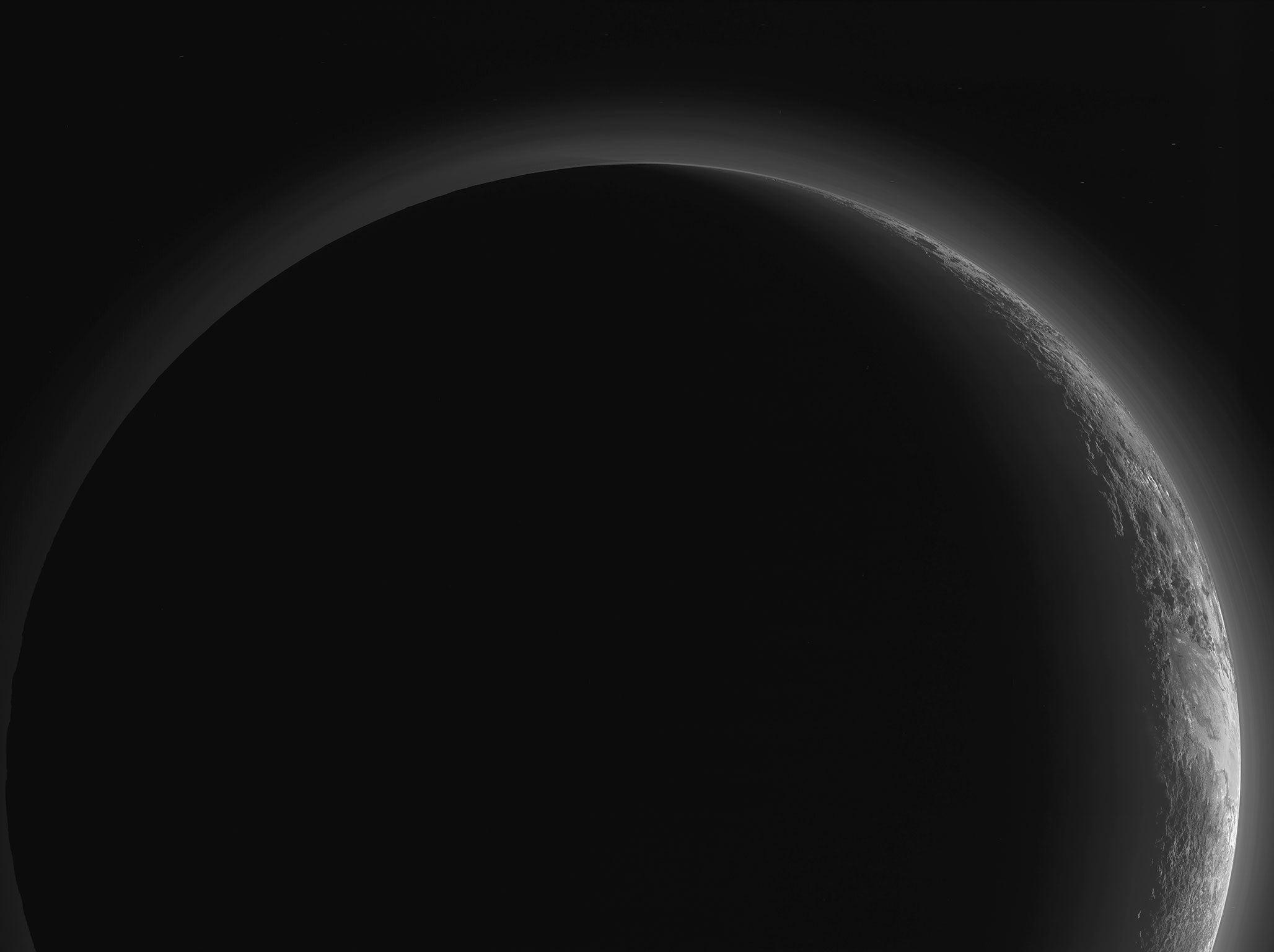Pluto’s stunning, hazy crescent captured in images from New Horizons team
The picture was taken just 15 minutes after New Horizons’ Pluto flyby — and Nasa’s teams have spent the time since assembling the image

Your support helps us to tell the story
From reproductive rights to climate change to Big Tech, The Independent is on the ground when the story is developing. Whether it's investigating the financials of Elon Musk's pro-Trump PAC or producing our latest documentary, 'The A Word', which shines a light on the American women fighting for reproductive rights, we know how important it is to parse out the facts from the messaging.
At such a critical moment in US history, we need reporters on the ground. Your donation allows us to keep sending journalists to speak to both sides of the story.
The Independent is trusted by Americans across the entire political spectrum. And unlike many other quality news outlets, we choose not to lock Americans out of our reporting and analysis with paywalls. We believe quality journalism should be available to everyone, paid for by those who can afford it.
Your support makes all the difference.Nasa has released perhaps its most stunning photo of Pluto yet — showing its hazy, bright crescent.
The picture has been released as part of the New Horizons mission, which sent a probe flying past Pluto in July.
Because the dwarf planet is lit up from behind, the various layers that make up its atmosphere can be seen. There are more than a dozen high-altitude layers visible.
The picture was taken by New Horizons, just 15 minutes after it completely the closest approach of its flyby on July 14. The spacecraft took the picture looking backwards, towards the sun.
A version of the picture was released in September. But at that time the picture was incomplete — and now Nasa’s teams have filled in the rest.
Lit up on the right of the planet in the image can be seen the icy plain that is called “Sputnik Planum”. Avoce that are huge mountains up to 3,500 meters high, and below is rough terrain with glaciers.
The streaks coming down above Pluto are stars, which have been smeared by the movement of the spacecraft.
Join our commenting forum
Join thought-provoking conversations, follow other Independent readers and see their replies
Comments